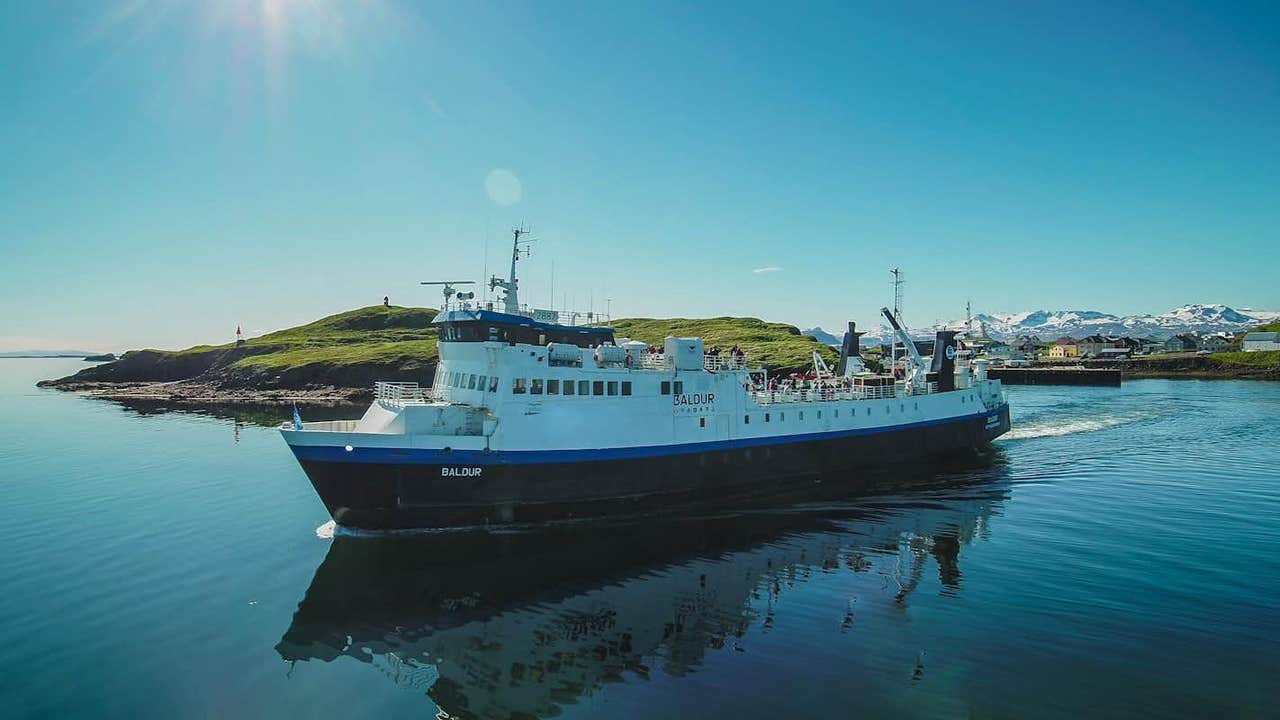Description
Résumé
Description
Explorez facilement les Fjords de l’Ouest en réservant cette place à bord du ferry Baldur, au départ de la Péninsule de Snæfellsnes. Ne manquez pas cette opportunité de visiter l’une des parties les plus sauvages de l’île en économisant de longues heures de route.
Le ferry Baldur est en service toute l’année en partance du village de Stykkishólmur sur Snæfellsnes et dépose les voyageurs à Brjánslækur dans les Fjords de l’Ouest en passant par l’île de Flatey. Vous pouvez emmener votre voiture de location à bord ainsi que tous ses passagers.
Stykkishólmur se trouvant à seulement 2 h 30 de route depuis Reykjavík, c’est le raccourci idéal pour une escapade dans cette partie reculée de l’Islande. Vous économisez ainsi jusqu’à 4 longues heures de route. La traversée dure tout juste 3 heures.
En prenant un départ matinal, vous avez également la possibilité de faire escale à Flatey, une petite île pleine d’histoire, autrefois centre religieux, riche en histoire et en culture. Très peu de monde visite ce joyau de l’Ouest islandais. Cette escale de deux heures vous laisse le temps de vous imprégner de l’esprit de ce lieu de vie typiquement islandais. Vous pouvez également vous adonner à l’observation de la faune locale composée de phoques et d’oiseaux.
Les voitures ne sont pas autorisées sur Flatey, dans le cas d’une escale, vous avez juste à donner vos clés à un des agents du ferry qui garera votre voiture sur le port de destination.
Le ferry en lui-même est très spacieux, abritant un restaurant, une aire de jeux pour les enfants ainsi qu’un salon avec une vue sur la terrasse panoramique. Vous pouvez réserver votre voyage retour avec le Ferry Baldur depuis les Fjords de l'Ouest vers Snaefellsnes.
Votre destination, Brjánslækur, est une parfaite introduction aux Fjords de l’Ouest. Ce port de pêche islandais est un excellent point de départ pour explorer la région en passant par des sites tels que les falaises ornithologiques de Látrabjarg ou l’immense cascade de Dynjandi.
Montez à bord du ferry Baldur pour votre prochaine aventure dans les Fjords de l’Ouest. Réservez vite en choisissant une date.













